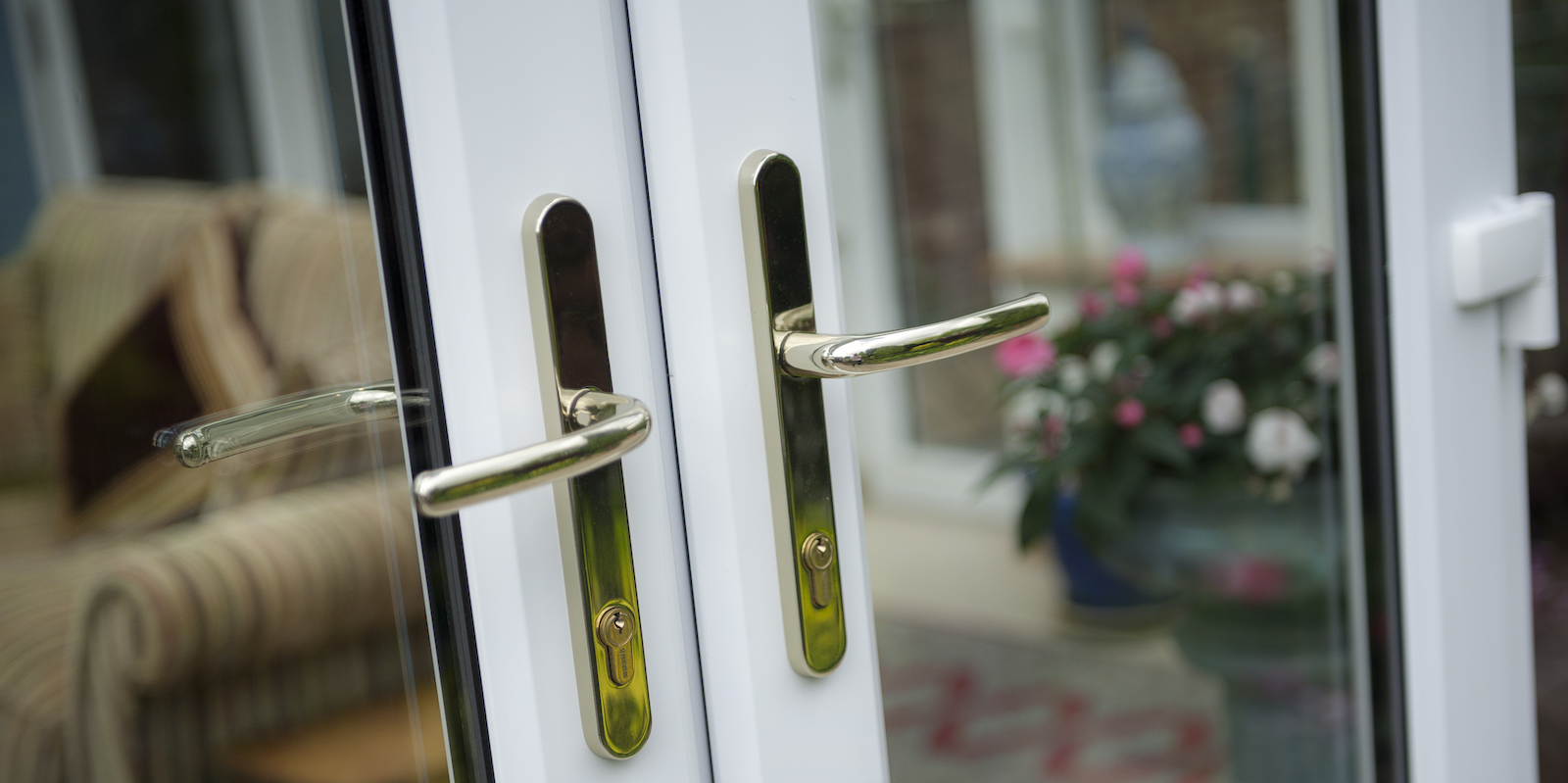See What French Door Locking Mechanism Replacement Tricks The Celebs A…
페이지 정보
작성자 : Zenaida Conn
조회수 : 6회
작성일 : 25-02-08 01:31
본문
 Fixing French Door Locking Mechanism Replacement
Fixing French Door Locking Mechanism ReplacementWhen it comes to locking your french doors, you want to make sure they're secure. This can be done by selecting the right lock that will keep your door safe without restricting airflow or affecting the aesthetics of your room.
French door locks typically have three-point locking systems that has flush bolts on the upper and lower edges of each door panel as well as the door's lockset that can be opened. This system is difficult to break.
How to fix a french door window frame replacement Door that won't lock
If your doors won't lock or don't latch properly, it can be a serious safety risk. This could be an indication of a major issue such as a broken locking cylinder. But don't worry about it, the issue is fixable by following a few simple steps.
The majority of the time, a door that won't close is because of an obstruction that blocks the latch. It could be as simple as dirt getting stuck in the latch, or the latch may be defective.
You can confirm if this is the case by looking at the strike plate (the metal piece that sits against the frame on the side of the door). If there is a small metal tab protruding from the strike plate, tap it gently using a screwdriver and hammer to bend it slightly, this will open the hole in the plate, allowing bolts can slide into the door more easily.
A seized latch is usually caused by a poor alignment or installation. Lubricating the latch will allow it function better, but will not fix alignment issues.
If you don't have a strikeplate, it is easy to install one. You'll need to take the lock body from the door (the part that screws into the door frame) and then replace the whole lock assembly with a brand new one. You'll require a Phillips-head screwdriver and a power drill for this, but it is not a difficult job.
To ensure that the lock functions as efficiently as possible, it is a good practice to regularly lubricate it especially the cylinder. Use graphite or silicone lubricant to do this. Apply the lubricant on the key and then turn it slowly several times until the cylinder is moving freely.
 A double-cylinder deadbolt is better than an ordinary deadbolt when comes to French doors. A simple lock that twists the handle won't be enough to stop intruders from entering, and a standard deadbolt with a thumb-turn on the inside of the door could be beaten by breaking the glass and reaching into the door.
A double-cylinder deadbolt is better than an ordinary deadbolt when comes to French doors. A simple lock that twists the handle won't be enough to stop intruders from entering, and a standard deadbolt with a thumb-turn on the inside of the door could be beaten by breaking the glass and reaching into the door.How do you fix an French door that isn't latching
The issue is often caused by the latch of the door not interacting correctly with the hole in the strike plate. This is typically due to hinges that are sagging, however it could also be due to the position of the latch or the latch itself. You can use lipstick, or a similar marker, to determine which one is responsible. This mark will help you determine the cause of the issue. For example, if the mark is below the strike plate, then it's likely the hinges. If it's above it could be the latch position.
When installing handles or a new lock mechanism on an external French Door it's important that the latch and strike plate holes are properly aligned. This is particularly important in the event that one door was closed for a long amount of time. In this period the door could be a little shifted. This is especially common with wooden or composite doors since they are susceptible to expansion or contraction in response to weather conditions and the conditions.
To fix this, take off the latch at the edge of the door that is active and remove it from the handle. Then with a chisel that is sharp and hammer, you can increase the strike plate hole in the door frame. This will permit the latch to be placed in a better position for the door, and when the door is opened and closed it will close easily without catching or rubbing on the frame.
After the hole for the latch has been enlarged, carefully place the new latch into the strike plate hole and screw it in. Then, re-adjust the strike plate using the screw and hammer until it is sitting in a more appropriate position, and then test the door. Make any adjustments as required.
The lock cylinder on external French Doors will not turn. This could be due to dirt or wear and tear, French Door Locking Mechanism Replacement however it's usually simple to fix. The lock may be blocked or the pins inside the cylinder are worn. A simple cleaning can make a huge difference to the operation of the mechanism, so it's worth giving it the go-ahead. If the issue continues it might be necessary to replace the lock cylinder.
Fixing a French Door That Won't Open
If your French door won't lock due to dirt or other debris It is likely that the mechanism is obstructed. Verifying that the frame is clean and there is nothing obstructing the locking mechanism is the first thing to do. There might also be a problem with the alignment of the French door and its frame. This can cause the door to drag on the frame and eventually cause jamming.
The lock mechanism itself is quite simple - the key rotates a spindle, which is then able to move a bolt back and forth on the rail. If the handle moves, but the bolt does not there is a problem, then something is not working. It could be a problem with the mechanics of the lock, or it may just require lubricating. Use a silicone spray. It will come with a nozzle you can use to direct the lubricant directly into the mechanism. Spray the spray liberally and then rotate the handle to ensure that the lubricant has reached all of the mechanisms.
You may also have to alter the position of the latch on the French door. It is generally possible to do this from outside. If you're french door window replacement doors are just installed they should be able to fix the handle and latch in the door without difficulty. If your french door replacement near me doors are older, you'll have to use the template included in the lock kit to mark the location where the holes for the handle on the door and latch on the frame should be. Make the hole for French Door Locking Mechanism Replacement the handle or knob at the proper height. This is typically around 36 inches above the floor. Then, you can drill smaller holes along the edge of the door for the latch.
After the hole has been drilled, you need to ensure that the latch plate is correctly set over the strike plate of the door frame. If it's not then the deadbolt might not retract into the strike plate when you pull the lever for locking. In the end, you'll need to screw the latch plate into place.
How do fix an French door that won't close
Sometimes the latch on the latch of a French door gets stuck so it can't be closed, rendering the doors ineffective. There's usually a solution to this, however it may require taking down one of the doors, especially when they're heavy. In most cases the latch isn't aligned properly with the strike plate, jamb of the door, or both. The dead bolt might not be fully extended or retractable. The misalignment could occur as time passes due to weather or settling.
If the latch is stuck, it may be difficult to open, but it's usually easy to fix the problem by loosening the screws holding the hinge to the frame, and then adding shims to make the door a bit higher or lower. This will get the latch closer to the lock mechanism and solve the issue.
If the latch isn't getting into the strike plate hole on the door jamb, you can usually fix the issue by loosing a screw that holds the strike plate and using an electric or a metal planer to cut away some of the edge of the plate until the latch is able to fit. This might also require removing the strike plate, and then chiseling out the hole to make it larger in the event that it is required.
The locks on French doors are often unable to properly engage. This could indicate an issue with the locking cylinder if you're using a newer lock system. If the lock isn't functioning properly, you'll need remove it and look for any visible damage.
replace sliding patio door with french doors cost the old weatherstripping on the exterior of a door that is older if you notice a draft coming in. This will form a tight seal and stop the doors from catching. Door sweeps can be added to fill in any gaps. If you do this, make sure that the sweeps are placed on both sides of the door, and ensure that the sweeps overlap at the bottom.